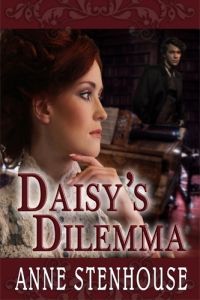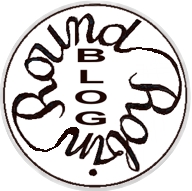Most novels have an easily understood point to make to the reader, do your stories ever have more subtle or intuitive themes?
 This month’s question contains an assumption – Novels have an easily understood point.
This month’s question contains an assumption – Novels have an easily understood point.
I’m not 100% sure that they do. Occasionally you’ll read a novel where the author constantly reminds you of the hero or heroine’s reason for being unlovable/depressed/hyper and very irritating they are. My preferred read is one where it slowly becomes clear that the hero or heoine struggled through a difficult or inadequate childhood or relationship or period of employment.
In my early work there were one or two characters whose inadequate childhood consisted of being given too much. Having no boundaries can be as difficult to surmount as having too many, I think.
Daisy in Daisy’s Dilemma is one such. She wants to marry John Brent and when he falls into her hands discovers, actually, that would be a great mistake. It’s the discovering she’d be in the wrong that makes Daisy’s story.
Coming up to date, my most recently published novel is contemporary and it deals with less flighty issues – bankruptcy, alcoholism and a life’s passion (for cooking). Here, I would agree I’m making use of subtlety and intuition. Why did Rosalie fall under Steve’s spell? She discovers why when she sees how he brings savvy businesswoman, Agnes, into line, too.
 I think when you’re writing romance the reader might expect either a happy ever after or a happy enough for now – and I don’t disappoint on that score. The journey, however, does contain those more subtle and intuitive themes. Mariah (of Mariah’s Marriage now available in some libraries) has a strong social consceince and fights to save her apparent enemy from domestic abuse by her brother. It’s the below the surface themes that add colour and depth to characters.
I think when you’re writing romance the reader might expect either a happy ever after or a happy enough for now – and I don’t disappoint on that score. The journey, however, does contain those more subtle and intuitive themes. Mariah (of Mariah’s Marriage now available in some libraries) has a strong social consceince and fights to save her apparent enemy from domestic abuse by her brother. It’s the below the surface themes that add colour and depth to characters.
My fellow authors, below, also have thoughts on this subject and you may like to read theirs.
Anne





 This month Rhobin has asked us to think: What characters in other author’s books have not left your mind? Have you written a character who wouldn’t leave you? Why do you think this happens?
This month Rhobin has asked us to think: What characters in other author’s books have not left your mind? Have you written a character who wouldn’t leave you? Why do you think this happens? 



